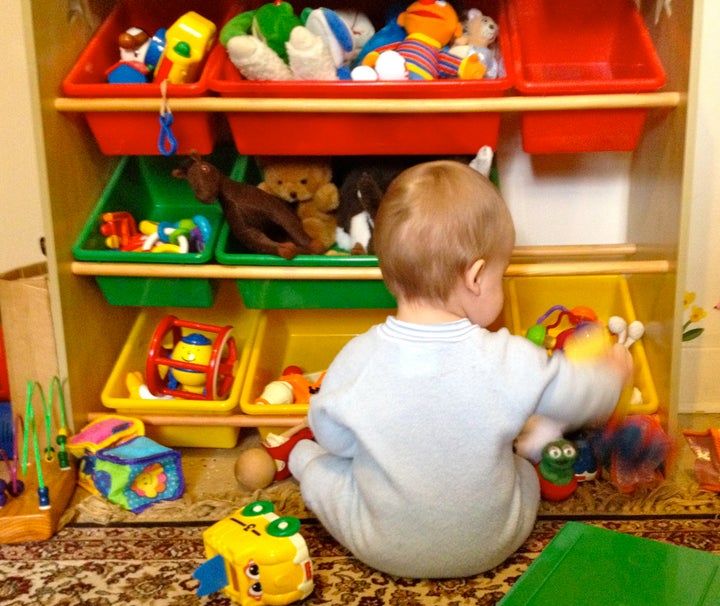
We know that play is the process by which children learn best and that play holds the key to positive development. We recognize that toys can be effective tools that manifest many benefits for learning.
The challenge has been to gain a deeper understanding of the play process, to better use research findings and support teachers and parents to fully comprehend their role in the use of toys at school and at home.
For example, encourage parents to use playtime and reading aloud in place of TV as integral parts of children's daily experience.
We should be concerned about the demise of recess, the extent of serious health issues of young children and the failure of schools to produce well-balanced children who are able to read, write, compute, communicate and also play and interact successfully.
The goals of effectively meeting the needs of children are a challenge. The challenge extends to parents and all who are involved in educating children.
We need to more closely examine terminology, history and practices to ascertain the impact and status of toys and their effectiveness as tools in the implementation of education from infancy through older children and throughout our lives. adults and seniors.
Toys are objects used in play and learning. The origin of toys dates back to prehistoric times. Objects representing people and tools have been found at archaeological sites. The origin of the word "toy" is unknown, but was first used in the 14th century.
A toy is defined as "a plaything that provokes a playful response."
Enlarging upon the definition, toys also "educate, entertain and stimulate." Toys support the child's imagination, stimulate creativity and extend fantasy play.
Good toys also promote emotional development, affection, communication skills, balance, coordination and physical development.
Toys constructively influence social and gender roles and provide valuable and effective activities.
Good toys encourage children and adults to interact socially, share and exchange ideas, help each other, role-play, and solve problems.
The right toys engage players and hold their interest. Toys encourage children and adults to explore, delve further and create new uses for the object.
Many also like exploring the box that the toy came in; so let's not forget about or dismiss the importance and essential aspects of "open-ended" play.
Toys include a wide range of products from traditional natural items such as shells, sticks and stones, to handmade objects, blocks, construction toys and dolls, to newer objects like figures (wood, plastic, fabric) and varied manipulative, creative and activity products.
Toys must also encompass didactic materials that include basics that have proven to be of value in early education over decades; as well as innovative electronic products that encompass acceptable and appropriate characteristics for learning.
Toys and play are important for the fullest development of children as they grow up and learn about themselves, family, friends, community and the world.
Children use toys and play to discover their identity, help their bodies grow strong, learn cause and effect, explore relationships and practice a wide variety of skills.
Toys help children to form and strengthen social bonds, learn, remember and reinforce lessons, provide incentives, discover personal and social identity, exercise minds and bodies and explore relationships. Toys are more than simple objects of amusement.
Toys and all the myriad ways that they are used in school and at home profoundly influence many aspects of the child's life experiences and skills and will continue to influence children as they go forward into the adult world.
The definition and scope of toys assumes adherence to toy safety standards, appropriateness for age, ability and context, plus cost considerations.
Toys are the first art experience of childhood. When children play with toys, they learn to appreciate form, shape, and color just as adults appreciate the same qualities when they view a painting or sculpture.
Toys are essential tools for children's learning and growing. Toys are an integral part of the larger context of play.
Tools are an entity used to interface between two or more domains that facilitate more effective action of one domain upon the other. Tools are viewed as essential for work. Play is the child's work. Just as a hammer or screw driver is essential to the carpenter so are toys the tools that children require to maximize learning.
Learning is the act of acquiring new knowledge, behaviors, skills, values, preferences or understanding, and may involve synthesizing different types of information. Progress in learning over time tends to follow learning curves. Children learn in multiple ways according to Dr. Howard Gardner, and others.
A well-prepared classroom or home play space offers a wide range of materials and is capable of meeting the needs of each child so each learner can accomplish agreed upon curriculum, school program goals and the full potential of play experiences.
When learning tasks are completed, an astute parent or teacher offers positive rewards, such as the use of a puzzle, construction toy, or other creative projects that are seen as fun, and will provide enrichment and reinforce behavior that supports the entire process of both learning and growing in skills and responsibility.
© 2012 Stevanne Auerbach, PhD,. Dr. Toy, San Francisco, CA